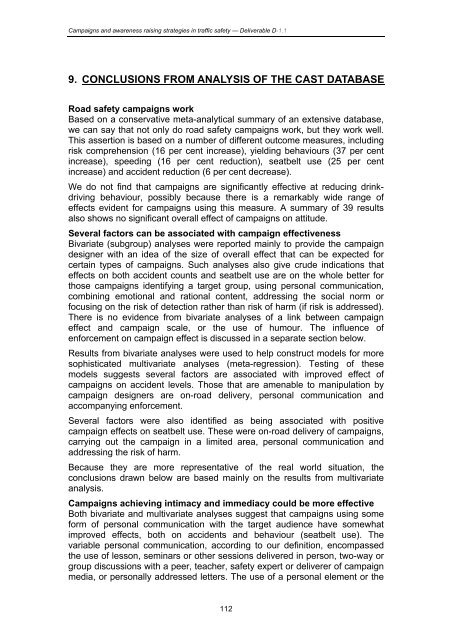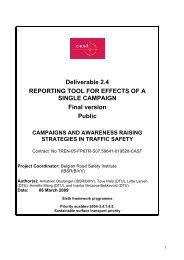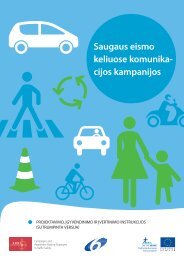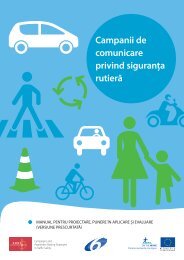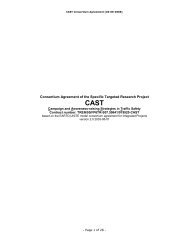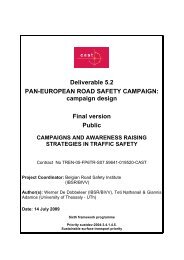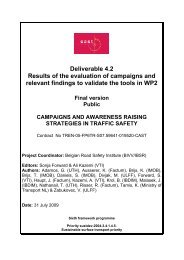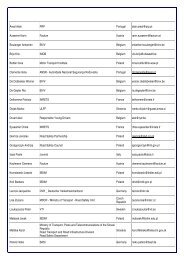Deliverable D 1.3 RESULTS OF META-ANALYSIS ... - cast-eu.org
Deliverable D 1.3 RESULTS OF META-ANALYSIS ... - cast-eu.org
Deliverable D 1.3 RESULTS OF META-ANALYSIS ... - cast-eu.org
Create successful ePaper yourself
Turn your PDF publications into a flip-book with our unique Google optimized e-Paper software.
Campaigns and awareness raising strategies in traffic safety — <strong>Deliverable</strong> D-1.19. CONCLUSIONS FROM <strong>ANALYSIS</strong> <strong>OF</strong> THE CAST DATABASERoad safety campaigns workBased on a conservative meta-analytical summary of an extensive database,we can say that not only do road safety campaigns work, but they work well.This assertion is based on a number of different outcome measures, includingrisk comprehension (16 per cent increase), yielding behaviours (37 per centincrease), speeding (16 per cent reduction), seatbelt use (25 per centincrease) and accident reduction (6 per cent decrease).We do not find that campaigns are significantly effective at reducing drinkdrivingbehaviour, possibly because there is a remarkably wide range ofeffects evident for campaigns using this measure. A summary of 39 resultsalso shows no significant overall effect of campaigns on attitude.Several factors can be associated with campaign effectivenessBivariate (subgroup) analyses were reported mainly to provide the campaigndesigner with an idea of the size of overall effect that can be expected forcertain types of campaigns. Such analyses also give crude indications thateffects on both accident counts and seatbelt use are on the whole better forthose campaigns identifying a target group, using personal communication,combining emotional and rational content, addressing the social norm orfocusing on the risk of detection rather than risk of harm (if risk is addressed).There is no evidence from bivariate analyses of a link between campaigneffect and campaign scale, or the use of humour. The influence ofenforcement on campaign effect is discussed in a separate section below.Results from bivariate analyses were used to help construct models for moresophisticated multivariate analyses (meta-regression). Testing of thesemodels suggests several factors are associated with improved effect ofcampaigns on accident levels. Those that are amenable to manipulation bycampaign designers are on-road delivery, personal communication andaccompanying enforcement.Several factors were also identified as being associated with positivecampaign effects on seatbelt use. These were on-road delivery of campaigns,carrying out the campaign in a limited area, personal communication andaddressing the risk of harm.Because they are more representative of the real world situation, theconclusions drawn below are based mainly on the results from multivariateanalysis.Campaigns achieving intimacy and immediacy could be more effectiveBoth bivariate and multivariate analyses suggest that campaigns using someform of personal communication with the target audience have somewhatimproved effects, both on accidents and behaviour (seatbelt use). Thevariable personal communication, according to our definition, encompassedthe use of lesson, seminars or other sessions delivered in person, two-way <strong>org</strong>roup discussions with a peer, teacher, safety expert or deliverer of campaignmedia, or personally addressed letters. The use of a personal element or the112


